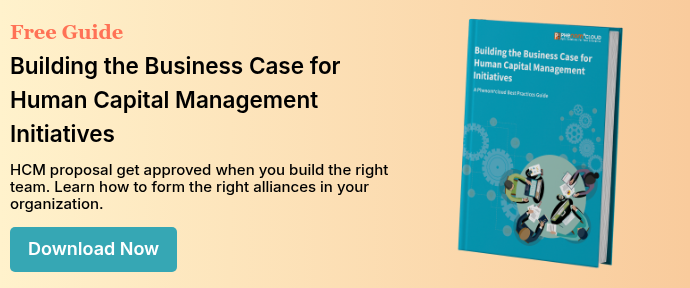
We often hear the concept of organizational agility, and we frequently discuss amongst ourselves and with our clients. We believe that recent improvement in human capital management technology has created opportunities for more companies to achieve it.
When we think about organizational agility, the first thing that comes to mind is Olympic gymnasts. They combine mental concentration, strength, stamina, coordination, balance and speed into a seemingly choreographed display of skill. Achieving that level of performance requires a sense of purpose, a culture of achievement, discipline of mind and body, and a rigorous training regimen. Olympic medals are not won on ability alone.
The same is true of organizations. Talent is not enough. Paul Bushet of Accenture describes high-performing organizations as having three characteristics:
- understanding of their markets and the ability to anticipate market changes,
- the capability to recognize, nurture, and develop traits that keep them ahead of competitors, and
- a performance anatomy, which Bushet describes as the “confluence of business strategy, culture, and leadership.”

Building an agile organization begins with culture and purpose. Purpose is one of the building blocks of culture. It is the principle that guides why it exists how its people interact with others inside and outside the organization. It is an intent beyond profitability – and can be anything from providing excellent service to changing the world.
An agile company supports its purpose with a focused business strategy, supported by a talent strategy, and nurtured by a comprehensive learning strategy.
The business strategy is the path to achievement and much more.

Business Strategy
Business strategy is about how the organization will achieve its purpose. It is the framework for making decisions, with enough controls to maintain discipline, but enough autonomy that people can change direction to seize opportunities as they arise. The strategy establishes the relationships and processes inside and outside the organization that make the business work, and it describes the measures and indicators that will define success.
Talent Strategy
The talent strategy is an essential component of the business strategy and a manifestation of the culture. It is the entire ecosystem of people and technology that bring the right people into the organization, help them learn and grow, and encourage them to innovate.
Recruiting systems, with their social networking capability, enable us to use our culture to attract the right people and create talent pools of passive jobseekers. We have assessments that will help us find the right cultural fit. Most important, we can use it to help managers hire well.
When we wrote about improving performance management with talented managers, we discussed the importance of rigorous assessment for promotions to management. Too often we promote people because it is “their time” or the “next logical move.” If they are not managerial talent, they become a drag on the organization.
How managers manage is at the core of organizational agility. But how do managers foster innovation?
We can offer few suggestions with help from Laura Goodrich of Global Workforce Transformation:
- Understand people. Know their interests and abilities and manage to them.
- Give people challenging assignments and leadership opportunities, and coach them to success.
- Monitor work/life balance and guard against burnout.
- Push people to think like leaders.
- Create room for independent work.
- Involve them in decision-making.
Learning Strategy
Talented people want to learn and grow. If they are not learning at your organization, they will find another. Make your organization a place of continuous learning.
- Develop career paths with a learning path for each. When an employee “tops out,” a lateral move might be the right track.
- Use data analytics to drive content planning and measure the effectiveness and impact of learning.
- Use collaboration and social learning tools to help people learn from each other.
- Let people create their own learning. With the ability to upload and publish content, anyone can create an instructional video with a mobile phone.
- Allow people to pursue areas of interest. MOOCs are a vast repository of content with little or no cost, and freemium providers Udemy, Lynda, and Udacity offer free and low-cost expert training.
- When a job becomes routine, explore lateral growth opportunities.
In today’s fast-moving business world, an agile workforce is essential to survival. Leverage your tools to create a collaborative, innovative work environment to help your organization grow.
References
Bushet, Paul. "Becoming Agile: How High-Performance Businesses Cultivate Organizational Agility Podcast Transcript." Accenture. 2012. Accessed January 26, 2016.
Goodrich, Laura. "How to Build an Agile Workforce - GWTNext.com." Global Workforce Transformation. September 04, 2015. Accessed January 26, 2016.
PhenomᵉCloud is a full-service technology company dedicated to helping clients solve business problems, improve the capability of their people, and achieve better results.


Leave a Comment